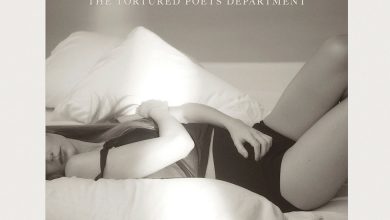Review: ‘Porgy and Bess’ Returns to a New Opera Landscape

George Gershwin’s “Porgy and Bess” is both easy and impossible to love.
Its contradictions may have been captured best in Truman Capote’s “The Muses Are Heard,” his 1956 dispatch from a touring company’s historic stop in the Soviet Union. “Porgy,” he wrote, was like an allergen to Russian officials — its characters erotic, God-fearing and superstitious.
But its reflection of America was a different story. “An exploited race at the mercy of Southern whites, poverty-pinched and segregated in the ghetto of Catfish Row,” Capote said, “could not be more agreeably imagined if the Ministry of Culture had assigned one of their own writers to the job.”
“Porgy” — which returned to the Metropolitan Opera on Sunday after two years, its performances still exhilarating but its staging still blandly naturalistic — keeps raising questions over its three hours. And after a long pandemic closure, during which the Met, like the rest of the country, took a fresh look at racial inequities, those questions are increasingly difficult to sit with.
Just a couple: Does “Porgy,” a leading contender for the Great American Opera, fulfill Antonin Dvorak’s prophecy that this country’s homegrown music would be founded on Black melodies? If so, did the work’s all-white creative team achieve that by exploiting stereotypes?
Opera is rife with troubled histories and receptions. Of two works now playing at the Met, Puccini’s “Turandot” is set in a fairy-tale China out of late Romantic Orientalism; Wagner’s “Die Meistersinger von Nürnberg” ends with a startling paean to German nationalism. Classics like those tend to be defended with a logic that some have applied to “Porgy”: This is an art form that deals in broad strokes and the mythic. Who, then, are Porgy and Bess if not just another pair of star-crossed lovers?
But that argument is on shakier ground with “Porgy” than “Turandot”; Gershwin’s work inevitably carries the baggage of American history. And its characters, mythic or not, can feel like cartoons of Black pain, violence and poverty. Black artists have had vastly divergent responses to the piece, but what James Baldwin called “a white man’s vision of Negro life” has remained ensconced in the repertory, held up by the same institutions that have long overlooked the work of Black composers.
There’s no clear resolution to any of the problems that have dogged “Porgy” since its premiere, in 1935. But it is here to stay — a discomfort to be experienced, pondered and managed, not removed. It’s no coincidence that the Met accompanied this production’s debut two years ago with face-saving initiatives like talks, an album celebrating Black artists of its past and an exhibition to match, and the announcement that it would present its first opera by a Black composer. (That work, Terence Blanchard’s “Fire Shut Up in My Bones,” opened the season in September.)
If “Porgy” is the Great American Opera, it is more for its score — an innovative and seamless blend of grand opera, Broadway, and invented spirituals and folk melodies — than for its subject matter. (For that, we have the melting pot milieu of Kurt Weill’s “Street Scene,” the original sin of American greed in Marc Blitzstein’s “Regina” or stateside verismo in William Grant Still’s “Highway 1, U.S.A.,” to name just a few.)
And at the Met, James Robinson’s production — a mostly timid, literal presentation of the libretto, by DuBose and Dorothy Heyward and Ira Gershwin — undercuts the defense of “Porgy” as timelessly mythic with its realistic direction and designs (by Michael Yeargan and Catherine Zuber). Even the preshow curtain, a towering photograph of Catfish Row, suggests something documentary. At odds with all this is the stylized and thoroughly modern choreography of Camille A. Brown.
But in the pit, the conductor David Robertson made an argument for the triumphs of Gershwin’s score, with stylistic shifts fluid and distinctly articulated. “Porgy” is also one of the great operatic portraits of a community; as such, its true stars are the chorus singers, matching the instrumentalists with vigor and richly textured delivery.
As Porgy, the bass-baritone Eric Owens sang with limited power, but imbued each line with dramatic consideration. The soprano Angel Blue’s Bess was one of tragic juxtapositions: luminous in “Oh, the train is at the station” and shattering in the conflicted Act III reprise of “Summertime.” (That standard was first heard, lush and stylishly ornamented, at the start of the opera, sung by Janai Brugger as Clara).
Much of the cast remains intact from 2019: Denyce Graves’s caring and comical Maria; Ryan Speedo Green’s mighty Jake; Alfred Walker’s similarly mighty but menacing Crown; Frederick Ballentine’s flamboyant Sportin’ Life; and Latonia Moore’s Serena, this production’s finest pairing of artist and aria in the showstopping “My man’s gone now,” and a commanding comfort in the later “Oh, Doctor Jesus.”
Moore, Green and Blue — all Met regulars — come to this revival fresh from “Fire Shut Up in My Bones.” As recently as last year, the idea of two operas with exclusively Black ensembles running at the company in the same month would have been fantastical. Thankfully, that’s no longer the case.
Porgy and Bess
Through Dec. 12 at the Metropolitan Opera, Manhattan; metopera.org.




